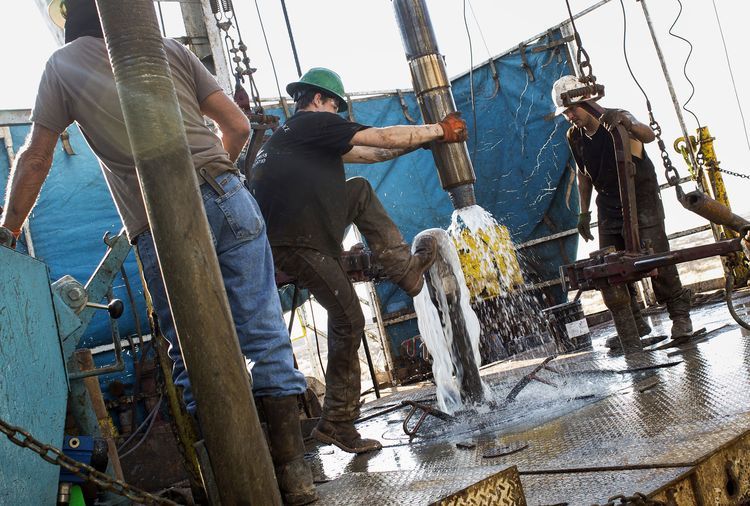
President Donald Trump is preparing to issue an executive order with the goal of giving oil companies more opportunities to drill offshore, reversing Obama-era policies that restricted the activity.
The offshore drilling directive is set to be issued soon, Interior Secretary Ryan Zinke told an industry conference in Washington on Thursday, according to three attendees who spoke on condition of anonymity to discuss a session closed to the press. Zinke did not provide specific details on the executive order during his presentation to the National Ocean Industries Association.
The coming order is set to push the Interior Department to schedule sales of new offshore oil and natural gas rights in U.S. Atlantic and Arctic waters, amending a five-year Obama administration leasing plan that left out auctions there, according to an industry representative who has discussed it with officials.
The order is also expected to begin the process of revoking former President Barack Obama’s decision to indefinitely withdraw most U.S. Arctic waters and some Atlantic Ocean acreage from future leasing. Environmentalists say it would be unprecedented for any president to rescind such a designation, and the reversal would almost certainly be challenged in court.
Spokesmen for the Interior Department and White House did not respond to emailed requests seeking comment.
Although Trump can set those policy changes in motion with an executive order, the real work falls to bureaucrats in the Interior Department and could span years. Wedging new Arctic and Atlantic lease sales into the government’s five-year plan would require environmental analysis and public comment periods — perhaps consuming a year for seas north of Alaska and even longer for parcels along the U.S. East Coast.
Trump’s move could benefit energy companies that now are focusing their U.S. offshore drilling programs on the Gulf of Mexico, including Royal Dutch Shell, Chevron Corp., Exxon Mobil Corp. and Statoil.
The Obama administration previously had considered selling leases in the Chukchi and Beaufort seas as well as 104 million acres of the mid- and south-Atlantic before ultimately foregoing those potential auctions. Though time consuming, restoring Arctic and Atlantic lease sales would be relatively straightforward.
But the Trump administration faces a bigger challenge in attempting to undo Obama’s decision to remove roughly 125 million Arctic acres and nearly 4 million acres in the Atlantic Ocean from future oil and gas leasing. Obama formalized those withdrawals by invoking an obscure provision in a 1953 law that does not explicitly give presidents the power to reverse previous designations.
Alaska Senator
Senator Lisa Murkowski, a Republican from Alaska, has stressed that the maneuver must be done carefully so it can survive legal challenges.
Environmentalists said that is precisely why the Trump administration would not be successful.
“The administration can stare all day at the statute Obama used to protect large parts of the Arctic and Atlantic, but they won’t find a syllable allowing Trump to revoke those protections. Neither will the courts,” said Niel Lawrence, Alaska director for the Natural Resources Defense Council.
“It’s hard to imagine riskier, more expensive or time-consuming places to look for oil,” Lawrence said by email. “It would be an extraordinary misuse of public dollars and agency resources to try to open them up now.”
The U.S. Arctic is estimated to hold 27 billion barrels of oil and 132 trillion cubic feet of natural gas. Energy companies have struggled to tap those resources, given high exploration costs and sparse infrastructure to support the activity, but there has been a surge of interest in Beaufort Sea waters hugging Alaska’s coastline, after recent announcements of discoveries by Repsol SA and Caelus Energy Corp. Eni SpA also asked U.S. regulators to consider its plan for oil exploration in previously leased Beaufort Sea tracts.
Recommended for you
